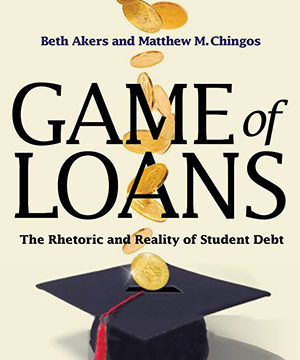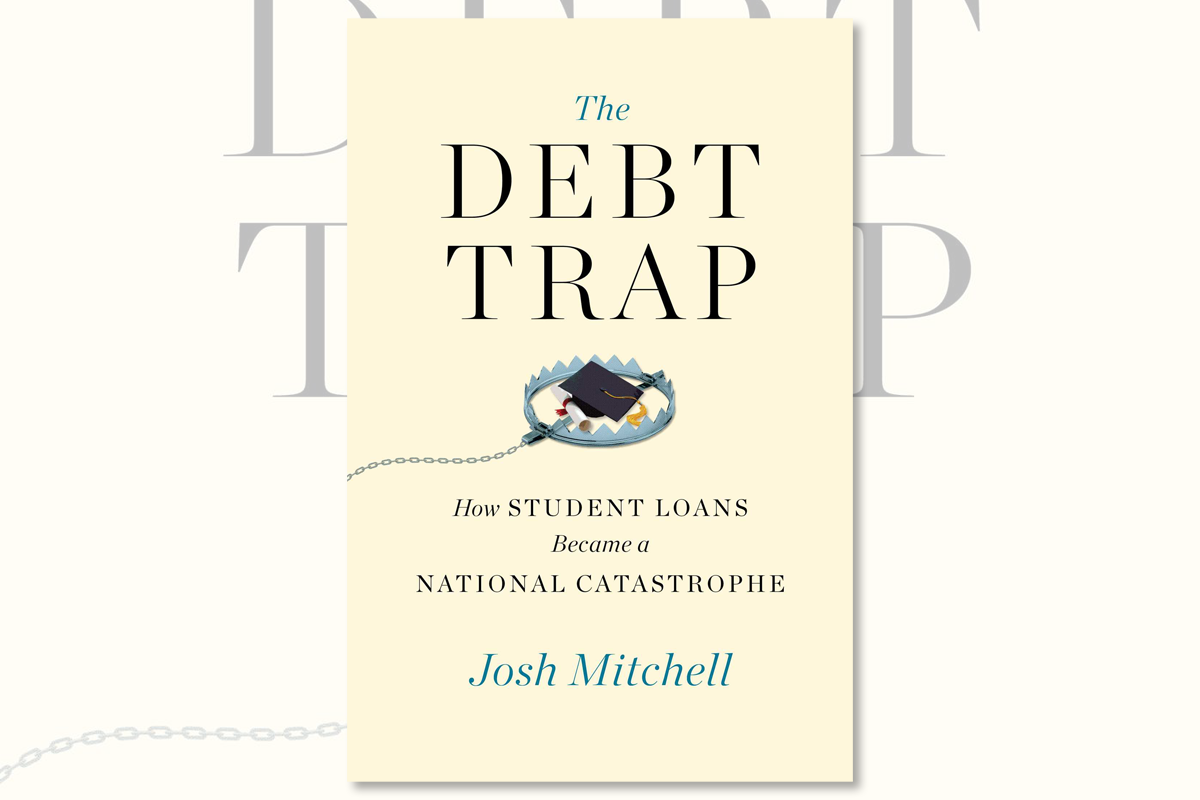 Dream Hoarders: How the American Upper Middle Class Is Leaving Everyone Else in the Dust, Why That Is a Problem, and What to Do About It
Dream Hoarders: How the American Upper Middle Class Is Leaving Everyone Else in the Dust, Why That Is a Problem, and What to Do About It
by Richard V. Reeves
Brookings Institution Press, 2017, $24; 240 pages.
As reviewed by Matthew M. Chingos
The excesses of the wealthiest 1 percent of Americans serve largely as a distraction from a much larger, more harmful class of villains: the upper middle class. That’s the argument of a new book by Brookings Institution senior fellow Richard Reeves, who points to evidence that upper-middle-class families are hoarding the American dream as they pull away from everyone else on measures of income, education, health, and family structure. The end result is likely to be a “hereditary meritocracy” in which the playing field is technically level but preparation for the game is highly unequal.
Reeves defines the upper middle class as families with incomes in the top 20 percent of the distribution. Any common-sense grouping would place the wealthiest fifth of households in the upper class, yet this population seems largely oblivious to its relative advantage: only 1 percent of Americans self-identify as upper class. Reeves’s definition, then, makes it clear to these readers that he is talking about them.
And it is the top 20 percent that has improved its standing more than middle- or lower-income families over recent decades. Reeves exaggerates the gains over time a bit, but the fact remains that wealth (and income) is distributed highly unequally: it’s an oft-quoted statistic that the top 1 percent of Americans hold about 37 percent of the country’s wealth. What’s less often mentioned is how much wealth is owned by the 19 percent of households just below the top 1 percent. In 2013, this group held 52 percent of the country’s wealth, up from 48 percent in 1983, while the bottom 80 percent of households held 11 percent of the wealth, down from 19 percent in 1983.
It is not obvious what the “right” levels of economic equality and mobility are, much less how to achieve them. But the idea that government policy should not disproportionately benefit affluent families should be uncontroversial. Reeves’s most significant contribution in this book is his condemnation of such policies and practices, including exclusionary zoning policies that drive up housing prices; advantages in college admissions for children of alumni (“legacy” preferences); favored tax treatment for 529 college savings plans; unpaid internships; and the mortgage-interest tax deduction.
Reeves’s list is far too short. First, I’d add neighborhood-based school attendance policies, which, coupled with exclusionary zoning, keep poor children from attending better-funded schools with higher-achieving peers. Second, I’d include higher-education tax credits, which are regressive and have failed to increase educational attainment. Third, I’d throw in student loan–forgiveness plans, which are likely to disproportionately benefit upper-middle-class families who borrow heavily to attend graduate school.
The list should also include most any aspect of the tax code that allows families to reduce their taxable income, which automatically benefits those with the highest incomes, because they face the highest tax rates. These items include the non-taxability of health insurance premiums and credits for certain childcare expenditures and retirement contributions.
Going after these policies is hard because both political parties have strong incentives to cater to the well-off. Reeves sometimes falls into this trap, such as when he praises President Barack Obama’s short-lived proposal to trade a highly regressive policy (the tax break for 529 plans) for a somewhat less regressive one (expanded higher-education tax credits available to families with annual incomes of up to $180,000). But he does call out free-college proposals as “yet another boondoggle for the upper middle class,” a prophesy fulfilled by Governor Andrew Cuomo’s recently enacted plan to make public colleges and universities tuition-free for New York State families with incomes up to $125,000.
If both political parties are committed to preserving, protecting, and defending the interests of the upper middle class, what is to be done? Reeves lists a number of proposals aimed at helping disadvantaged families—or at least their children—move up the socioeconomic ladder, including better family planning, interventions that seek to improve parenting, policies to recruit higher-quality teachers to high-needs schools, and reforms to higher-education financing.
The most glaring omission from Reeves’s book is a discussion of how school-choice policies can aid in the assault on exclusionary zoning policies, which combine with exclusionary schooling policies to allow upper-middle-class families to buy into schools that are public in name only. Policies that break down district and school attendance boundaries, such as open enrollment within districts or state plans that foster choice across districts, could open up opportunities for disadvantaged students to attend better schools. Breaking the link between housing and schooling could also weaken support for exclusionary zoning, thus disrupting the vicious cycle between residential and school segregation.
Any proposed changes that threaten benefits, real or perceived, enjoyed by affluent families will be politically difficult to achieve, even in places where most residents identify as politically progressive. Reeves argues that political progress will require some change in social norms and attitudes—for instance, a shift toward thinking that getting your children into a selective college through legacy admissions is no more acceptable than securing such advantages through bribery.
Is Reeves correct to cast the upper middle class as villains? Even he can’t seem to decide, such as when he argues that a key goal of public policy is to make the childhood experiences of disadvantaged children more like those of kids from affluent families. It seems likely that well-off families, by and large, are not villains but rather feel obligated to “keep up with the Joneses’ children,” as Reeves puts it. And of course, no one can be faulted for taking advantage of legal mechanisms such as the mortgage interest deduction or the opportunity to save for college in a 529 plan.
Whether the affluent are villains is largely a moot point, because shaming people is surely bad politics, and people will always choose what they see as best for themselves and their children. At the same time, changing norms is a worthy goal, especially as existing government handouts to the upper middle class have failed to tamp down demand for new regressive policies such as free college tuition and lower interest rates on student loans. The extent to which this kind of class privilege has permeated the ranks of the supposedly more progressive of our two major political parties is particularly discouraging.
But enlisting the support of the upper middle class in the assault on entrenched patterns of inequality and mobility is likely to require a gentler approach than the one the author assumes here. Perhaps instead of demanding that affluent families “check our privilege,” Reeves might have appealed to “the better angels of our nature.”
Matthew M. Chingos is director of the Urban Institute’s Education Policy Program and an executive editor of Education Next.
This article appeared in the Fall 2017 issue of Education Next. Suggested citation format:
Chingos, M.M. (2017). The Rich Get Richer: Is America’s top 20 percent holding back everyone else? Education Next, 17(4), 77-78.





